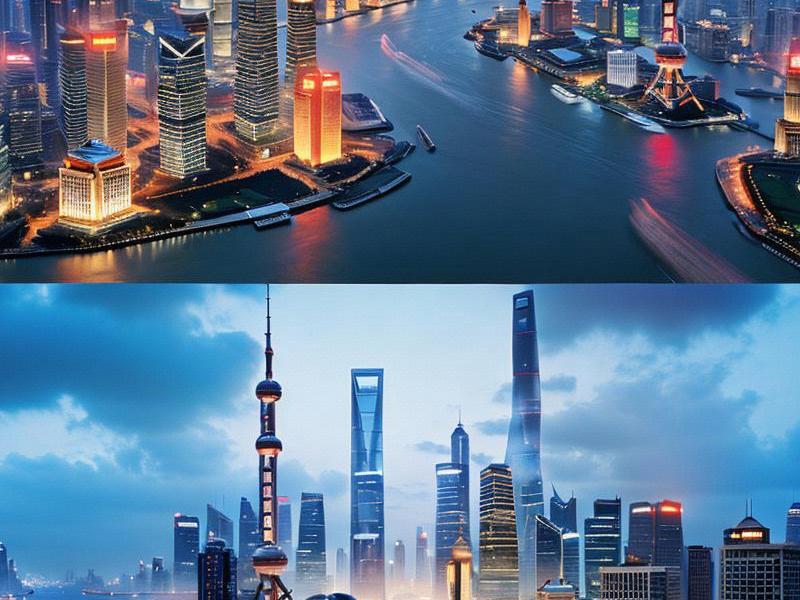Shanghai and Surrounding Areas: A Comprehensive Overview of the Economic and Cultural Hubs
⏱ 2025-04-23 00:13 🔖 上海龙凤419
📢0℃

Shanghai, often referred to as the "Pearl of the Orient," stands as a beacon of China's economic and cultural achievements. Located at the mouth of the Yangtze River, it serves as a crucial gateway for international trade and commerce. The city's strategic location has facilitated its transformation from a small fishing village into one of the world's most influential metropolises.
The economic landscape of Shanghai is characterized by its robust industrial base, advanced technology sectors, and a thriving financial market. The city is home to the Shanghai Stock Exchange, one of the largest in Asia, and houses numerous multinational corporations and Fortune 500 companies. Its port, the Port of Shanghai, is the busiest container port in the world, underscoring its importance in global trade.
The surrounding areas of Shanghai, including the Yangtze River Delta region, contribute significantly to the city's economic vitality. Cities such as Suzhou, Hangzhou, and Ningbo form a contiguous urban agglomeration, often referred to as the "Greater Shanghai Area." This region is known for its high-tech industries, manufacturing capabilities, and rich cultural heritage.
Suzhou, often called the "Venice of the East," is renowned for its classical gardens, silk production, and traditional craftsmanship. The city's well-preserved ancient architecture and serene canals attract millions of tourists annually, making it a key player in Shanghai's tourism industry. Hangzhou, on the other hand, is famous for its West Lake, a UNESCO World Heritage site, and its contributions to the tea culture, particularly Longjing (Dragon Well) tea.
上海龙凤419体验
Ningbo, with its deep-water harbor and strong maritime tradition, has emerged as a significant hub for international trade and logistics. The city's economic development is driven by its advanced manufacturing sector, particularly in electronics, machinery, and shipbuilding. The integration of these surrounding areas with Shanghai has created a synergistic effect, fostering regional economic growth and enhancing the overall competitiveness of the Greater Shanghai Area.
Culturally, Shanghai and its surrounding regions are a rich tapestry of traditions and modern influences. Shanghai, in particular, is known for its unique blend of Eastern and Western cultures. The city's colonial architecture, such as the Bund and the French Concession, stands as a testament to its historical interactions with foreign powers. These areas have been meticulously preserved and now serve as cultural landmarks, attracting both domestic and international visitors.
The culinary scene in Shanghai is another aspect that reflects its cultural diversity. From the famous Xiaolongbao (soup dumplings) to the savory Shengjianbao (pan-fried dumplings), Shanghai's cuisine is a delightful fusion of flavors and techniques. The city's night markets and food streets offer a glimpse into the local lifestyle and the vibrant food culture that thrives in this dynamic region.
上海私人外卖工作室联系方式
The process of urbanization in Shanghai and its surrounding areas is both a challenge and an opportunity. Rapid urban expansion has led to significant infrastructure development, including the construction of high-speed rail networks, modern airports, and advanced transportation systems. These developments have improved connectivity within the region and with other parts of China, facilitating economic activities and enhancing the quality of life for residents.
However, urbanization also poses challenges such as environmental concerns, traffic congestion, and the need for sustainable development. The Shanghai municipal government has been proactive in addressing these issues through initiatives aimed at green urban planning, waste management, and public transportation improvements. The city's commitment to sustainability is evident in projects like the construction of green buildings, the promotion of renewable energy, and the development of eco-friendly urban spaces.
The integration of technology and innovation is another hallmark of Shanghai and its surrounding areas. The city has established itself as a leading hub for research and development, with numerous universities, research institutions, and technology parks. These entities collaborate to drive technological advancements and foster innovation across various sectors, including finance, healthcare, and information technology.
上海喝茶群vx
Shanghai's role in global affairs is also noteworthy. As a member of the World Expo, the city has hosted major international events that showcase its capabilities and promote cultural exchange. The 2010 World Expo, for instance, was a landmark event that attracted millions of visitors and highlighted Shanghai's commitment to sustainability and urban development.
The surrounding areas of Shanghai continue to play a crucial role in the region's economic and cultural landscape. The Yangtze River Delta region's integration with Shanghai has created a powerful economic bloc, driving regional development and enhancing China's global standing. Cities like Suzhou, Hangzhou, and Ningbo contribute to this dynamic through their unique strengths and complementary industries.
In conclusion, Shanghai and its surrounding areas represent a fascinating blend of economic prosperity, cultural heritage, and modern innovation. The city's strategic location, robust industrial base, and vibrant cultural scene make it a key player on the global stage. The integration of the Greater Shanghai Area has created a synergistic effect, fostering regional growth and enhancing the overall competitiveness of the region. As Shanghai continues to evolve, its commitment to sustainability, innovation, and cultural preservation ensures that it remains a beacon of progress and a symbol of China's aspirations.
Shanghai's Quantum-Financial Nexus: Where Bund Architecture Fuels Hyperspace EconomicsShanghai Life: From Street Art to Skyline ArchitectureShanghai's Nightlife Renaissance: How Entertainment Clubs Drive the City's After-Dark EconomyShanghai and Beyond: The Economic Powerhouse Reshaping the Yangtze DeltaShanghai After Dark: How the City's Entertainment Clubs Are Redefining Global Nightlife StandardsShanghai’s Velvet Renaissance: Where Imperial Elegance Meets AI-Driven NightlifeShanghai Beauties: The Shining Icons of the CityKeywords: Shanghai, Beauties, City Icon, Fashion, Culture, GlamourDescription:This article delves intoThe Shanghai Financial Revolution: How China's Economic Powerhouse is Redefining Global FinanceShanghai Style Revolution: How Local Women Are Redefining Global Beauty Standards【倾城之变】从月份牌到陆家嘴:上海女性的百年形象演进史

